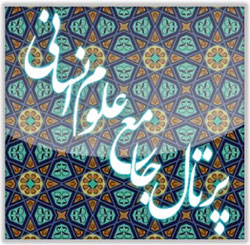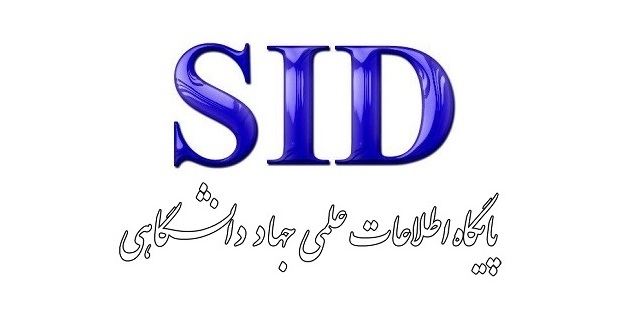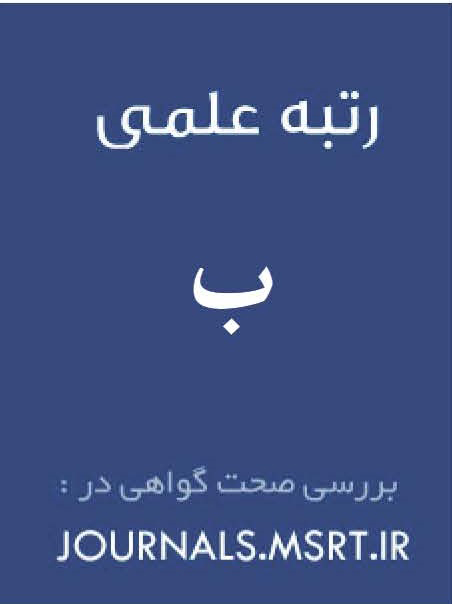Application of Michael Riffaterre’s Semiotics Theory in the Analysis of Fereydoon Tavallali’s Poem “Mahtab”
Keywords:
Michael Riffater, Semiotic Theory, ApplicationAbstract
Semiotics is a systematic, reader-centered, and structuralist-based study that was introduced by Michael Riffaterre (1978) as a practical method for analyzing literary texts, especially poetry. According to this theory, the reader—through their literary competence—identifies interconnected networks of signs, uncovers the poem’s connotations, and perceives the subtexts disseminated throughout the text to discover its origin and underlying meaning. The present article first introduces Riffaterre’s theoretical approach and then, based on this framework, provides a reading of the poem “Mahtab” from Tavallali’s poetry collection Raha. This poem, like most of the works in the Raha collection, contains innovative poetic imagery accompanied by themes such as loneliness, despair, darkness, sorrow, and death, which are considered central characteristics of the Romantic school. This study, employing a descriptive–analytical method and drawing on Riffaterre’s semiotics theory as well as its theoretical capacities and scholarly contributions, seeks to propose creative strategies for reading and conducting a more precise analysis of the selected poems.
Downloads
References
1. Riffaterre M. semiotics of poetry. Bloomington, IN: Indiana university press; 1978.
2. Chandler D. Mabani-ye Semiology (Fundamentals of Semiotics). Tehran: Sooreh Mehr; 2021.
3. Payandeh H. Nazariye va Naqd-e Adabi (Literary Theory and Criticism). Tehran: SAMT; 2019.
4. Alguneh Junghani M. The Application of Riffaterre's Semiotic Model in Reading Poetry. Journal of Contemporary Literature Research. 2017;22(1):33-57.
5. Alguneh Junghani M. Semiology and Poetry (Collection of Articles). Tehran: Naviseh Parsi; 2018.
6. Allen G. Intertextuality. Tehran: Markaz; 2006.
7. Riffaterre M. Text Production. New York: Columbia University press; 1983.
8. Nabilou A. A Semiotic Reading of Akhavan's 'Zemestan' and Sepehri's 'Payami dar Rah'. Contemporary Persian Literature. 2013;3(4):113-36.
9. Sharifi F. She'r-e Zaman-e Ma (Fereydoun Tavallali) (The Poetry of Our Time (Fereydoun Tavallali)). Tehran: Negah; 2021.
10. Roozbeh M. Adabiyat-e Moaser-e Iran (She'r) (Contemporary Iranian Literature (Poetry)). Tehran: Roozegar; 2009.
11. Shafiei Kadkani M. Mousighi-ye She'r (The Music of Poetry). Tehran: Agah; 1991.
12. Shafiei Kadkani M. Ba Cheragh va Ayineh (With Lamp and Mirror: In Search of the Roots of Contemporary Iranian Poetry's Transformation). Tehran: Sokhan; 2013.
13. Pournamdarian T. Khaneh-am Abri Ast (My House is Cloudy). Tehran: Morvarid; 2019.
14. Zarghani SM. Cheshmandaz-e She'r-e Moaser-e Iran (A Perspective on Contemporary Iranian Poetry). Tehran: Sales; 2005.
15. Yousefi G. Cheshmeh-ye Roshan: Didari ba Sha'eran (The Clear Spring: A Meeting with Poets). Tehran: Sokhan; 2009.
16. Barahani R. Tala dar Mes (Gold in Copper). Tehran: Zaman; 1979.
17. Tavallali F. Raha (Free). Shiraz (Kanun-e Tarbiat-e Shiraz): Soroush; 1967.
Downloads
Published
Submitted
Revised
Accepted
Issue
Section
License
Copyright (c) 2025 مریم موسی زاده نصرآبادی (نویسنده); فاطمه شیخلووند; عیوض هوشیار (نویسنده)

This work is licensed under a Creative Commons Attribution-NonCommercial 4.0 International License.








